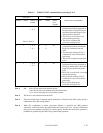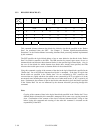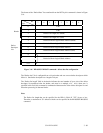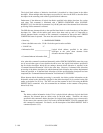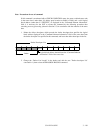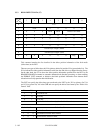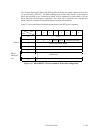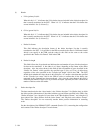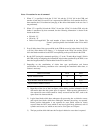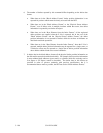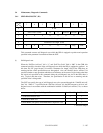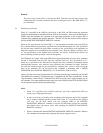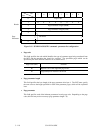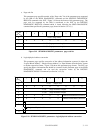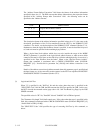
C141-E124-01EN 3 - 105
Notes: Precautions for use of command
1. When “1” is specified in both the “P List” bit and the “G List” bit in the CDB, and
transfer of both the P List and G List is requested, the IDD first of all transfers the P List,
then transfers the G List afterward (merging of the defect information in the two lists is
not performed).
2. When “0” is specified in both the “PList” bit and the “GList” bit in the CDB, only the
header is transferred by that command, but the following information is shown in the
header at this time.
x PList bit: “0”
x GList bit: “0”
x Defect List Length field: The total number of bytes described in the “Defect List
Format” specifying defect data included in the P List and G
List.
3. Even if defect data of the type specified in the CDB do not exist in the defect list (P List
or G List) (if the defect list is empty), “1” is displayed in the “PList” bit and the “GList”
bit in the header transferred to the INIT corresponding to the specification in the CDB.
4. By the INIT issuing this command specifying “4” in the “Transfer Byte Length” field in
the CDB, and by investigating the information in the header transferred by the IDD, it can
know the length (number) of data included in the P List and G List.
5. Depending on the combination of defect data type specifications and format
specifications, the following conditions exist concerning the transferred defect data, so
caution is necessary.
Defect List Format PList GList
Block Address Format 2) 2)
Byte Distance from the Index Format 1) 1), 3)
Physical Sector Address Format 1) 1)
1) Regardless of the size of the User Space, all the defect position information for the
disk media other than the system space is reported. Defect position information is
also reported for areas which cannot be clearly accessed from the INIT, such as the
spare sectors for alternate blocks.
2) Logical data blocks which have undergone slip processing due to defective sectors,
and logical data blocks which have undergone alternate processing, are reported.
Defect position information is not reported for areas which cannot be clearly
accessed from the INIT (areas which do not have logical block addresses) such as
cylinders and sectors, etc. which are not used as User Space or CE Space.
3) The byte position which indicates the first byte in defective sector data is reported.



